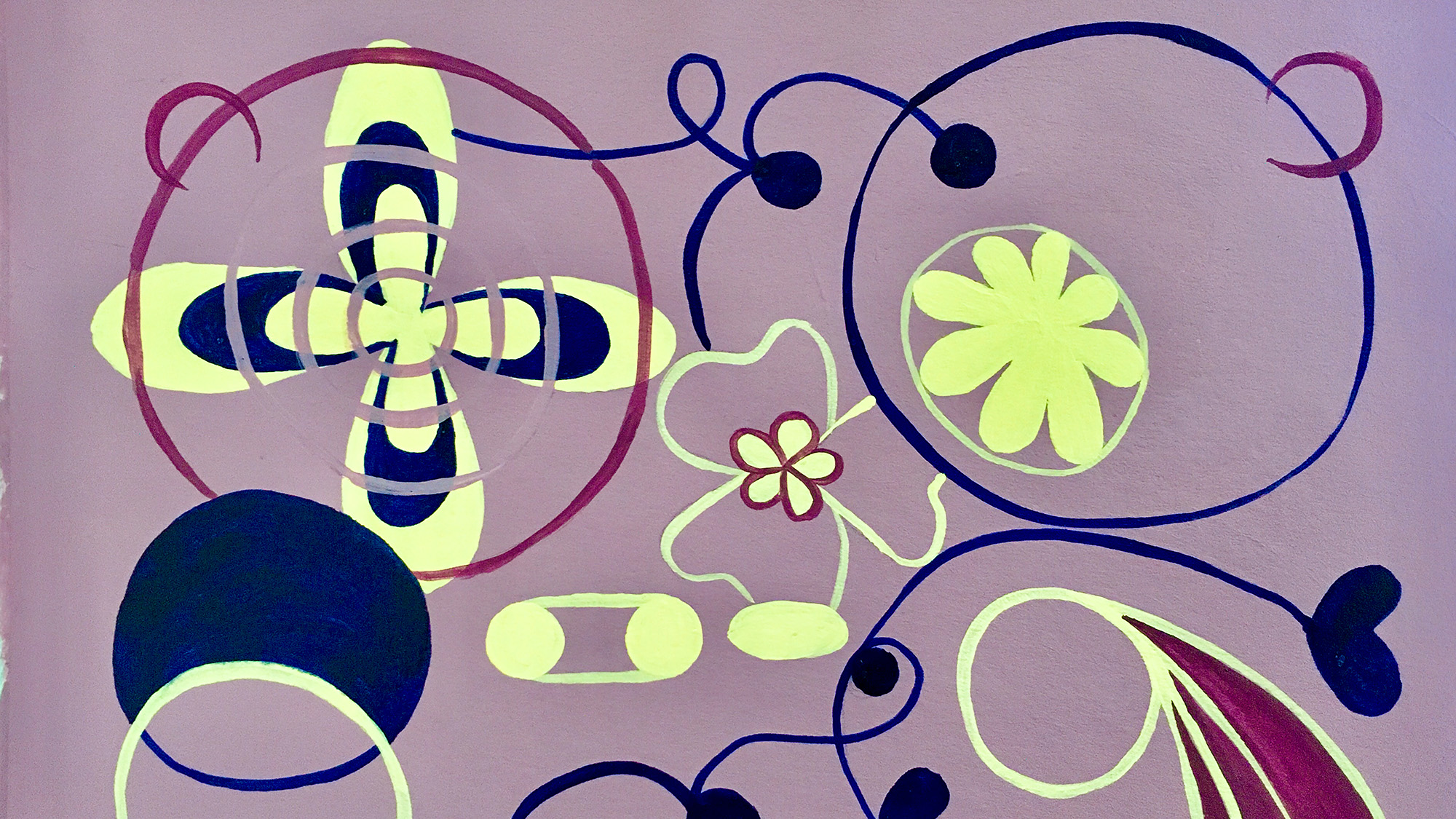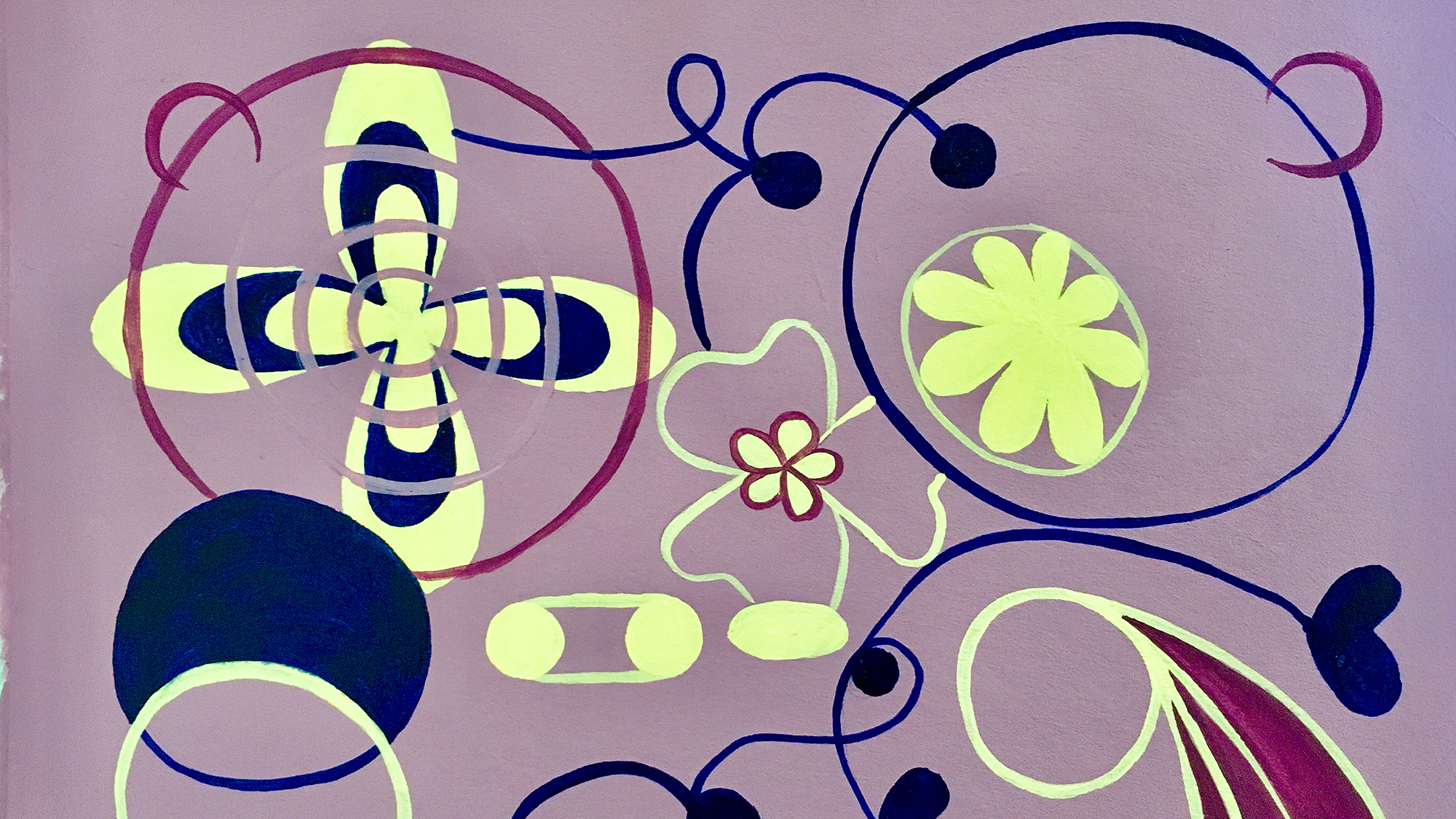
From digital to analog
From digital to analogabstract painting with 3 “coolors”
This assignment can be seen both as a warm-up for the study of colors and color mixing. It focuses on playfully experimenting with colors, mixing exact shades of color, and on an introduction to the work of Swedish artist Hilma af Klint (1862-1944). Af Klint’s abstract works remained hidden and thus unknown for a long time. By now, however, she is considered a pioneer of abstract painting. Af Klint already created abstract paintings in 1906, even before Wassily Kandinsky did – but this fact has only become known many years after her death.
Description
Mixing colors is an integral part of art lessons as a starting point for dealing with colors. This project takes a different approach by linking color theory with art historical positions. Based on abstract paintings by Hilma af Klint, colors will be identified, named, collected and mixed by the students themselves. Hilma af Klint was born in 1862 and lived in Sweden. While her work never truly made it to the art historical foreground, today she is increasingly perceived as one of the pioneers of abstract painting – a practice she started even before superstars-to-be Kandinsky and Mondrian. Some particularly noteworthy works by af Klint are “The Ten Largest” (1907), “The Swan, No. 17” (1914-1915), “Altarpiece, No. 1, Group X” (1915), which are excellent for discussing color compositions and as starting points for color mixing and playful experimentation with acrylic paints.
This teaching concept addresses mixing and naming, as well as experimenting with and randomly combining colors. The students get their inspiration – or colors – from Coolors’ digital color palette and then continue to work analogously with brush and paint, experimenting with color-mixing.
In these lessons on abstract painting and color mixing, students are encouraged to develop image composition skills and get to know new colors and their names. They work with the Coolors color palette app, the AnswerGarden mind map app and with acrylic paints on paper.
Tasks and specific work steps
- Introduction:
Before working with Coolors and mixing acrylic paints, abstract works (e.g., “The Ten Largest,” “The Swan, No. 17,” “Altarpiece, No. 1, Group X”) by pioneering abstract painter Hilma af Klint will be introduced and the artist and her color compositions will be discussed. To that end, excerpts or the trailer of the film “Beyond the Visible: Hilma af Klint” (2019) are worth watchin. Since Wassily Kandinsky is mentioned in the trailer as a long-assumed forerunner of abstract painting, it makes sense to also introduce one of his paintings (e.g. “Color Study: Squares with Concentric Rings”, 1913).The students are asked to note down all the color names they know in form of a “silent discussion” using the AnswerGarden digital mind map (question: How many colors do you know?): They are sent a link and type their answers into their devices. Each color is listed only once, visible to all participants. The students’ repertoire of color names should expand over the course of the unit by working with Coolors’ digital color palette.
- Implementation:
Students browse through randomly selected color combinations (3 colors) on Coolors and choose and save a combination of three. They then try to recreate these three colors as accurately as possible by mixing. Using their three colors, they eventually create abstract paintings on paper. Let them experiment and try things out.
- Presentation:
The students’ chosen color palettes are printed out and placed next to the painting when the students present their abstract work (in digital or analog form), so that the color’s names are in view, too.
Sources and References
- Film: Beyond The Visible – Hilma af Klint (Dir: Halina Dyrschka, 2019)
Trailer:
https://www.youtube.com/watch?v=UGw9sAxhXXw&ab_channel=ZeitgeistFilms
Images/Examples

Vom Digitalen ins Analoge – abstrakte Malerei mit 3 „Coolors“ © 2022 by Rebecca Viola Lobe is licensed under CC BY-SA 4.0
Additional Information
Author’s Encouragement
Students have the chance to play and work with colors they may not know or have never used before. They learn how to mix colors and to be inspired digitally. A special advantage of Coolors is that it displays color names and numbers. In addition, students are introduced to Hilma af Klint, a pioneer of abstract painting whose name and work were little-known have long gone unmentioned. AnswerGarden is an easy way to collect color names that students already know, multiple mentions of terms and “rushes” to the blackboard can be avoided.